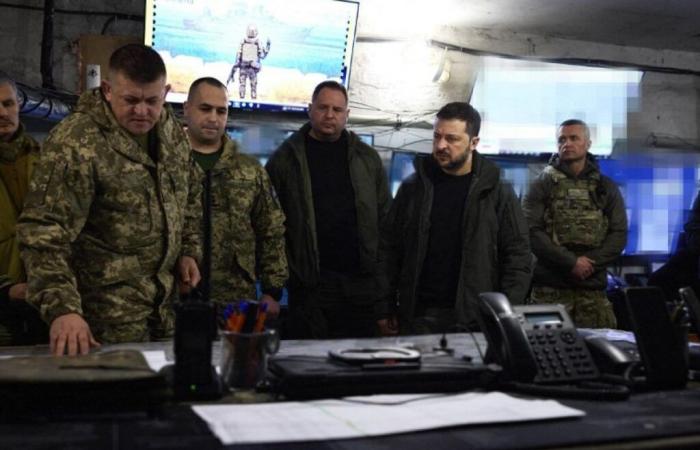
This training program, explains its director, Colonel Guillaume (the French army does not disclose last names), represents a “major evolution” compared to those already implemented in France and elsewhere in Europe. Part of the European Union training mission, it was “co-constructed” with Ukrainian instructors, also present on site to supervise new recruits alongside 1,400 French soldiers. With nine weeks of practical training, it is longer than the standard five-week program used by the British Army in East Anglia as part of Operation Interflex, which has already trained 45,000 Ukrainians.
What's new is the decision to train, deliver and equip a brigade by a European force (before last year's Ukrainian counter-offensive, America led a similar effort in Germany). Joined by 1,500 soldiers already trained in Ukraine, “Anne of kyiv,” as the new brigade is called, will be made up of two command posts, three infantry battalions and full logistical support units. A freight train carrying a first batch of 100 armored vehicles for the brigade will soon leave France for Ukraine, declared Sébastien Lecornu, the Minister of Defense, on November 14. The brigade will also receive Caesar howitzers, short-range air defense systems, anti-tank missile launchers and other equipment, which the Ukrainians will know how to use and maintain. Furthermore, French Mirage 2000 fighter jets, which are being adapted to carry French SCALP cruise missiles, will arrive in Ukraine later next year.
According to Mr. Lecornu, this new training program could help ensure better tactical return to the battlefield. In a report published in July by the Royal United Services Institute, a British think tank, Jack Watling and his co-authors point out that Ukrainians' lack of familiarity with the given equipment and the absence of collective training are two shortcomings that contribute to explain the failures of counter-offensive operations in 2022 and 2023. At one point, the authors note, each trained Ukrainian brigade used and attempted to maintain up to five different types of armored vehicles.
The French had to adapt the system to the evolving situation on the front, explains Colonel Philippe, responsible for the final exercise. The French had to dig wider trenches to match those of the Ukrainians. Visitors asked for more time with the drones. Still at the request of the Ukrainians, the final exercise is focused on defense. The troops have been out since the evening before, flown over by French planes and helicopters, in order to test their resistance to fatigue and stress. Grenades are used to simulate airstrikes. French military trainers insist that, despite Mr Zelensky's problems with conscription, these trainees – whose average age is 38 – are motivated. “They learn twice as fast as our own recruits,” says an instructor.
For all its merits, this effort risks being too little, too late. Over the past few months, Ukraine has lost territory to Russia at multiple points along the front line. Its forces are exhausted and Ukraine is struggling to mobilize new conscripts. In September, Mr. Zelensky said he needed 14 new brigades, suggesting that even four of them were not yet equipped despite allies' promises. The election of Donald Trump has changed the diplomatic atmosphere. Mr. Macron has perhaps become one of the most virulent hawks in Europe. “Nothing should be decided on Ukraine without the Ukrainians, nor in Europe without the Europeans,” he declared in Paris on November 12. But he and his fellow Europeans fear they will have no say in what happens next. The best they can hope for is to help the Ukrainians gain a tactical advantage to strengthen their negotiating position.





